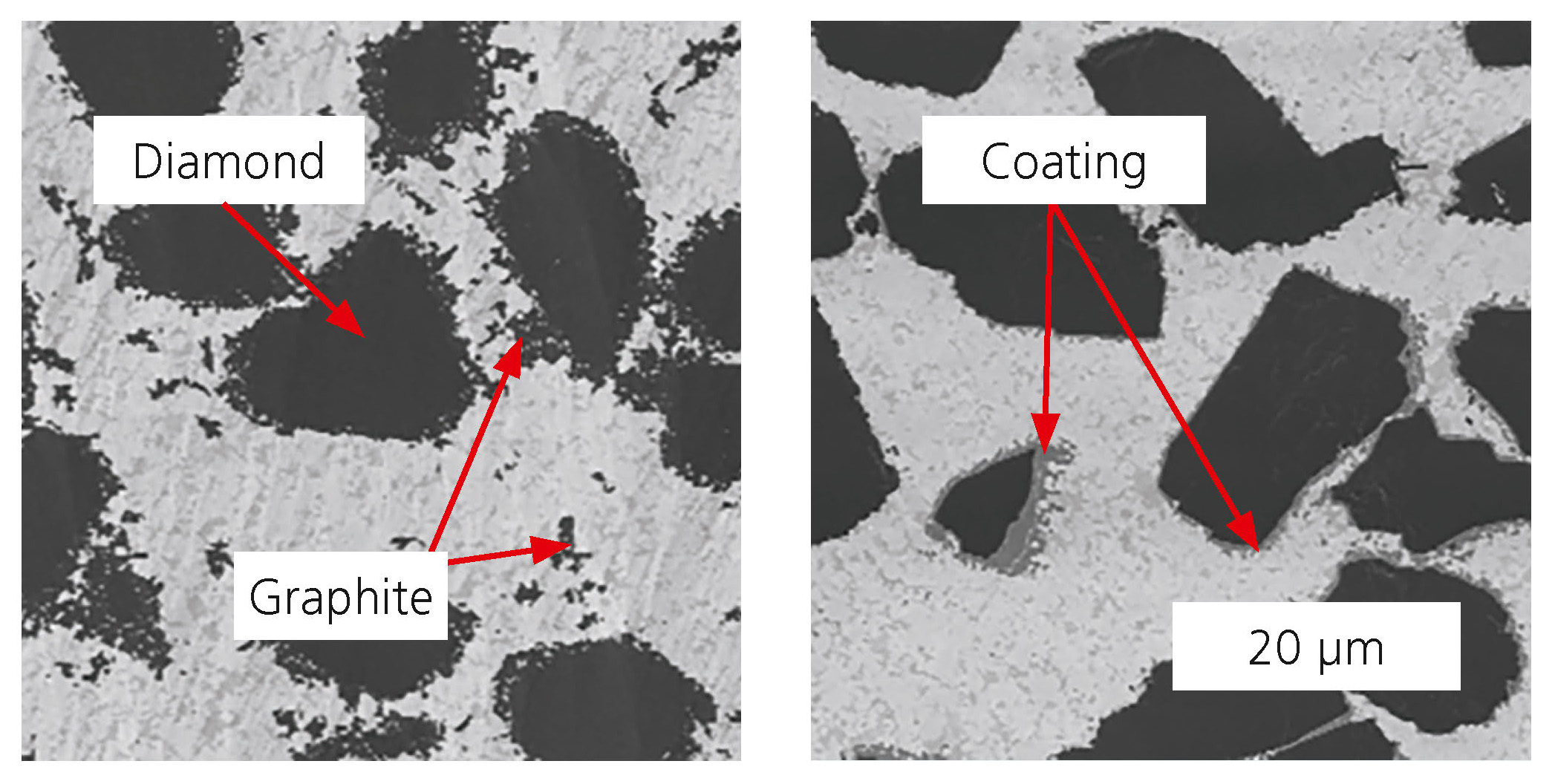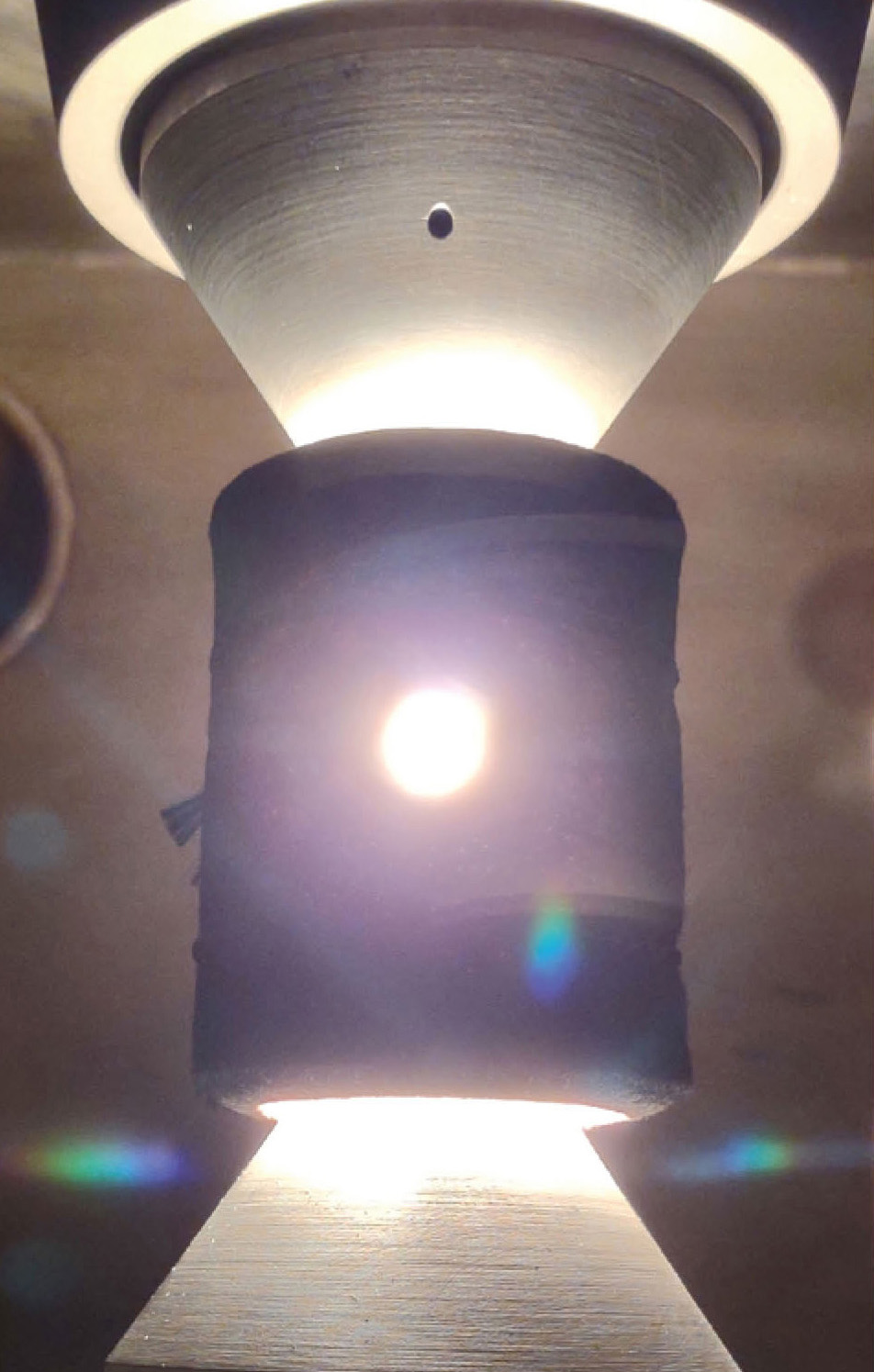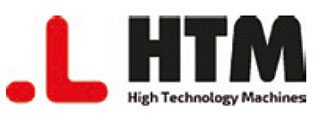
Cobalt-free hardmetal-diamond composites
Current research



Hardmetals were developed one hundred years ago. Since then, the material has been established in many branches of industrial production and has become as relevant as steel and concrete. Hardmetals owe this to their unique combination of the hard ceramic phase tungsten carbide (WC) and tough, metallic cobalt (Co) as matrix material. By varying the WC grain size and share of Co binder the properties can be tailored to specific applications across a wide range. To ensure the supply of hardmetals to the European industry, the availability of tungsten and cobalt is strategically important. This is why both materials have been rated as “critical raw materials” (CRM) by the European Union in terms of supply risk and economic significance. This is made worse by the high demand for cobalt for use in Li-ion batteries. A large part of the required raw materials stems from countries outside the EU with unstable, repressive political systems and the associated inhumane and environmentally damaging working conditions, making the raw material supply volatile. Beside increased exploitation and processing of raw materials in EU countries and higher recycling rates, substitution is a third key factor. One way to reduce the need for raw materials is to increase the lifetime of hardmetal parts. In the context of the ongoing shift away from fossil fuels, difficult-to-machine high-strength materials are needed for the generation of sustainable energy and for lightweight design, testing the limits of hardmetals. Within the M-ERA.NET project “NovCom”, co-financed by the Saxon State Ministry of Science, Culture and Tourism (SMWK, FKZ: 100406144), cobalt-free diamond-enhanced cemented carbides (DECC) are being developed at Fraunhofer IKTS, which will allow the EU to take further steps towards raw materials independence. Due to the extreme hardness and high thermal conductivity of diamond, the novel composite’s properties will exceed those of conventional hardmetals. Very high pressures have to be applied to stabilize the diamond structure at the temperatures necessary to consolidate hardmetals and prevent its disintegration into graphite. However, cost-effective production is not achievable with these technologies. The biggest challenge to overcome in the development of DECC is therefore to inhibit the conversion of diamond into graphite. This can be achieved by lowering sintering temperature and reducing time through the field assisted sintering technique (FAST), developed at Fraunhofer IKTS. In combination with a newly developed binder alloy and coated diamond grains, graphitization was efficiently suppressed. Utilization of commercially available starting materials and established powder metallurgical procedures ensures smooth integration into existing industrial processes. Currently, together with GeniCore Sp. z o.o., a developer of sintering units, and the tool manufacturer HTM High Technology Machines Sp. z o.o., Fraunhofer IKTS is working on the implementation and validation of cutting tools. Near-net-shape sintered parts and functional gradation deliver additional potential for further development.
Supported by


